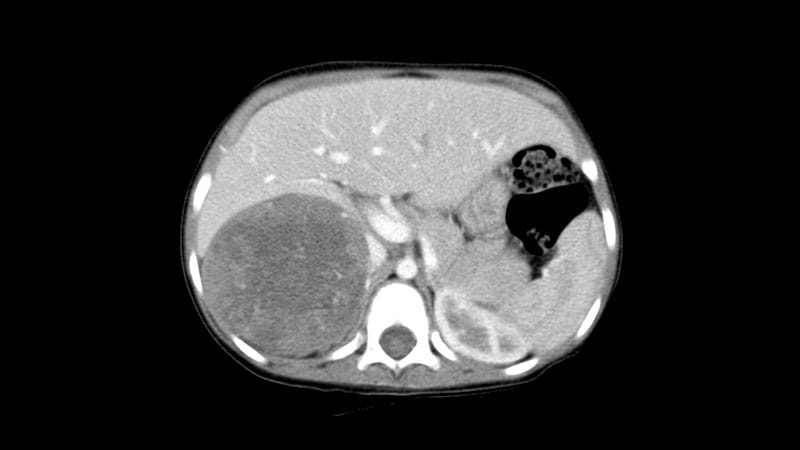CAR T Cells Show Promise in Treating High-Risk Childhood Neuroblastoma
Core Concepts
CAR T cell therapy shows promising results in treating high-risk childhood neuroblastoma.
Abstract
The study focused on treating high-risk neuroblastoma in children using third-generation chimeric antigen receptor (CAR) T cell therapy. Here are the key highlights and insights from the content:
High response rates and few serious adverse effects were observed in children with high-risk neuroblastoma treated with CAR T cell therapy.
Neuroblastoma is a common solid tumor in children outside the cranium, accounting for a significant portion of pediatric cancer deaths.
Nearly half of newly diagnosed patients have high-risk disease with low survival rates.
Previous studies with monoclonal antibodies targeting GD2 showed survival improvements in high-risk patients.
The study examined the impact of third-generation GD2-targeting CAR T cells in over 25 children with heavily pretreated neuroblastoma.
An overall response rate of over 60% was achieved, with 3-year overall survival reaching 60% in those who received the recommended dose.
The CAR T cells contained a suicide gene as a safety switch for rapid elimination if needed.
The study highlighted the feasibility and safety of GD2-CART01 treatment in high-risk neuroblastoma patients.
Understanding resistance mechanisms in non-responding patients is crucial for future clinical trial designs.
The study details the successful manufacturing of CAR T cells in all patients and the efficacy of the recommended dose.
The persistence of GD2-targeted CAR T cells in patients' blood up to 30 months after infusion was noted.
A significant response rate was observed in children, with 63% overall response rate in the study.
CAR T Cells Offer Hope in High-Risk Childhood Neuroblastoma
Stats
Neuroblastoma accounts for 11% of all pediatric cancer deaths.
Long-term survival among high-risk neuroblastoma patients who fail first-line therapy is as low as 5%-10%.
Overall response rate of over 60% was observed in the study.
3-year overall survival was 60% in patients who received the recommended dose of CAR T cells.
Event-free survival at 3 years was 36%.
Cytokine release syndrome was reported in 74% of patients, but it was mostly mild.
GD2-targeted CAR T cells were detectable in the peripheral blood of 96% of patients up to 30 months after infusion.
Quotes
"Our findings suggest that GD2-CART01 may induce sustained eradication of disease in a proportion of patients with relapsed or refractory neuroblastoma." - Researchers
Key Insights Distilled From
by Liam Davenpo... at www.medscape.com 04-05-2023
https://www.medscape.com/viewarticle/990472
Deeper Inquiries
What are the potential implications of understanding resistance mechanisms in patients who did not respond to CAR T cell therapy
Understanding the resistance mechanisms in patients who did not respond to CAR T cell therapy can have significant implications for future treatment strategies. By identifying the reasons behind treatment failure, such as antigen loss, mutation, or an immunosuppressive tumor microenvironment, researchers can tailor therapies to overcome these obstacles. This knowledge can guide the design of more effective clinical trials by targeting specific mechanisms of resistance, potentially improving response rates and outcomes for patients with high-risk neuroblastoma.
How can the findings of this study contribute to the development of tailored combination therapies for high-risk neuroblastoma
The findings of this study can play a crucial role in the development of tailored combination therapies for high-risk neuroblastoma. By demonstrating the efficacy of third-generation GD2-targeting CAR T cells in children with heavily pretreated neuroblastoma, researchers can explore the potential synergies of combining CAR T cell therapy with other treatment modalities. Understanding the mechanisms of treatment failure in nonresponders can inform the selection of complementary therapies that target these specific resistance pathways, leading to more personalized and effective treatment approaches for high-risk neuroblastoma patients.
How might the long-term persistence of GD2-targeted CAR T cells impact the future treatment strategies for neuroblastoma patients
The long-term persistence of GD2-targeted CAR T cells observed in this study has important implications for future treatment strategies for neuroblastoma patients. The sustained presence of CAR T cells in the peripheral blood up to 30 months after infusion suggests the potential for durable responses and long-term disease control. This persistence could support the development of maintenance therapies or strategies to enhance the longevity of CAR T cell activity, ultimately improving outcomes for patients with high-risk neuroblastoma. Additionally, understanding the factors that influence CAR T cell persistence can help optimize treatment protocols and dosing regimens to maximize the therapeutic benefits of this novel immunotherapy approach.
0
More on Healthcare
